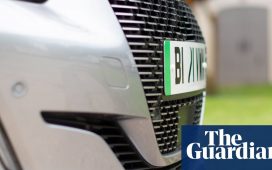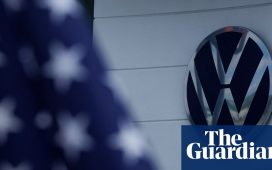Time is running out.
It’s running out on us in lots of ways – mortality is not a pleasant thing to contemplate – but here’s the way I mean today.
It seems as if every few months we hear about some automaker announcing plans to build a new plant, either to build electric vehicles or the batteries that make them go (and electric vehicles are essentially big batteries on wheels).
This is of interest to us because last year Hyundai came close to picking the 3,528-acre Southern Virginia Mega Site in Pittsylvania as the location for an 8,100-job battery plant. Instead, that factory, and those jobs, went to a site near Savannah, Georgia, partly because that site was closer to being market-ready. And now it’s learned that Gov. Glenn Youngkin nixed the state’s bid for a 2,500-job Ford battery plant that was looking at that same site out of concerns that Ford’s partner was Chinese, a move that seemingly runs counter to his stated desire to attract more big employers to the state — although, as I pointed out in a previous column, this is a calculated gamble that he can turn Ford and its Chinese partners away and still attract something comparable.
Citing the loss of big projects to other states, Youngkin wants to dramatically increase the amount of money Virginia spends on site preparation – from $150 million to $600 million over the course of the two-year state budget. That’s actually just part of an even bigger shift. Under former Gov. Terry McAuliffe, the figure had been $500,000 a year – so $1 million in a biennium. When Ralph Northam was governor, he saw Virginia lagging behind other states, so in his final budget, he proposed increasing spending from $5 million to that $150 million. If Youngkin’s budget request is successful, we’ll have gone from $1 million in a biennium to $600 million, an increase of geometric proportions. “The opportunity cost of inaction is clear,” Youngkin said. “It’s time to stop playing small ball.” Just this week, Youngkin announced $90 million in grants for site preparation at 21 sites (although curiously the vaunted Southern Virginia Mega Site didn’t get the full amount it was requesting although a smaller site next door in Henry County did).
In pushing for more sites, Virginia is entering a race that other states – notably North Carolina and Georgia – have been dominating. I’ve written before about how those two states have been spending big on megasites – and when those sites have filled up, they’ve developed new ones. Now other states – most notably Michigan – are also getting into the mega site business, and they’re doing so as the window for landing electric vehicle plants is about to close. Mind you, I’m not saying Virginia shouldn’t do this. And electric vehicle plants aren’t the only big-time employers out there that need mega sites. I’m just pointing out an economic reality: There are only going to be so many electric vehicle plants to go around.
Actually, I’m not the one saying this. The newspaper in Toledo, Ohio, The Blade, recently put together a strong big-picture account of what’s happening. Car companies have been drifting out of the industrial Midwest for a long time. Only recently, though, the paper said, have those states become truly alarmed. The reason is the realization that electric vehicles aren’t some passing fad; they are the future of the auto industry. Some of you can make fun of electric vehicles all you want but automakers will likely have the last laugh. All around the world, they’re setting deadlines for phasing out gas-powered vehicles; some day the only gas-powered cars you’ll be able to buy will be on the used car market. (See my previous column on this.) To prepare for that all-electric era, car companies are on a factory-building binge to construct plants to assemble either electric cars or the batteries that make them go. The big-picture point: The new economic geography of the auto industry is being drawn right now because once this initial round of plants is built, it will likely be a long time before others are constructed.
Belatedly, The Blade reports, states in the industrial Midwest have come to understand the true nature of the threat. The Blade quoted one consulting firm as saying “some of these traditional automotive states, over time, seem to think it’s their right” to get new plants – and they’re now finding out that’s not so. In fact, The Blade said, they’re finding out that they’re often at a disadvantage – and not just for the traditional reason that Southern states are right-to-work states where employers face a lower chance of unions taking hold.
Instead, states such as Michigan, Indiana and Ohio are finding that their automotive heritage might actually hurt recruitment of electric vehicle plants. “Automakers also know that switching over to EVs will require significant job training regardless of whether they hire workers with traditional car-making experience, or those altogether new to the business,” The Blade reported. Furthermore, “In the South, it is often easier to attract enough workers to staff a big new plant. … An automaker doesn’t need to compete for staff with other surrounding auto assembly plants and parts suppliers, as it would across much of the Midwest.” Demography is also on the South’s side, the paper said. “Auto companies also factor in how easy it will be to convince workers to relocate to the town or city where they are building a new facility. … Much of the Southeast — with its warm weather and often ample outdoor recreation opportunities — is an easier sell than Toledo, especially to young people.”
That’s not all. Southern states have been more aggressive about offering incentive packages, The Blade points out. Georgia shelled out $1.5 billion for a Rivian plant; Tennessee laid out $900 million for Ford. By contrast, Virginia’s incentive package for Amazon’s HQ2 was about $750 million.
Finally, Southern states have also moved faster to put together mega sites, perhaps because they have more undeveloped land. The Blade said that Ohio’s grid pattern limited most sites to 640 acres, because that’s what’s available between roads. (Somehow the state has still assembled at least two mega-sites of 1,000-plus acres.) Michigan apparently isn’t constrained by such colonial-era rules. It’s developing not one, not two, but three new mega sites of 1,000-plus acres – and has also put $1 billion into a “business attraction fund.” Those industrial Midwest states are particularly concerned about losing car manufacturers because they also fear how electric vehicles will undo the existing supply chain – and create an entirely new one that will be someplace else.
Here’s the engineering genius of electric cars: They have a lot fewer parts. The website Motor and Wheels says that a conventional car has about 30,000 parts; an electric vehicle half that – 15,000. The website Energy Right, run by the Tennessee Valley Authority, narrows that down even further: A conventional car has about 2,000 moving parts, an electric vehicle just 18. Electric cars are bad news for the auto parts business – and 58% of the jobs in the automotive industry are in the parts side of the business, not the vehicle assembly side, according to a report by the Texas comptroller.
Here’s where we must dispense with one myth: Although electric vehicles have fewer parts, that doesn’t mean they’ll require fewer workers. The Boston Consulting Group studied what’s happening in Europe, which is much further along in its conversion from gas to electric. It concluded that, yes, that conversion will eliminate 640,000 jobs – but also create 580,000 more, just in different fields. Fewer jobs at manufacturers, more on the energy infrastructure side. That’s still a net loss but the consultants concluded that over time “the shift to EV will have only a minor net impact on jobs, leaving the total number of jobs in the affected industries largely unchanged in 2030 compared with 2019.”
So what does all this have to do with us? I said that time is running out, and here’s how: The Blade quoted officials saying that “four or five major battery plants are still searching for a U.S. location” and that this land rush to win electric vehicle-related plants will be over in the next two to three years. At that point, the new geography of the industry will be largely set.
During that time, the competition for those remaining plants is likely to become fiercer. North Carolina and Georgia are developing new sites. Michigan has just signaled it’s not going down without a fight. And even within Virginia, we’ll see at least one more 1,000-acre-plus mega site besides the ones in Pittsylvania County and Greensville County, which has the 1,000-acre Mid-Atlantic Advanced Manufacturing Center: The Chesapeake City Council recently voted to acquire and develop a 1,420-acre site. The economics of scarcity apply: The going rate for incentives for these plants is likely to go up and companies can be a lot more demanding about speed-to-market time.
For those who want to see a big battery plant at the Southern Virginia site – that could obviously still happen. But those aren’t the only big prospects out there. We’re also likely to see a boom in coming years in microchip manufacturers. The CHIPS and Science Act that Congress passed, and President Joe Biden signed, last year specifically encourages re-shoring semiconductor manufacturing. Guess what? Michigan, with its new mega sites, is targeting those, too. Buckle up for a wild ride the next few years. Even electric cars still require safety belts.









